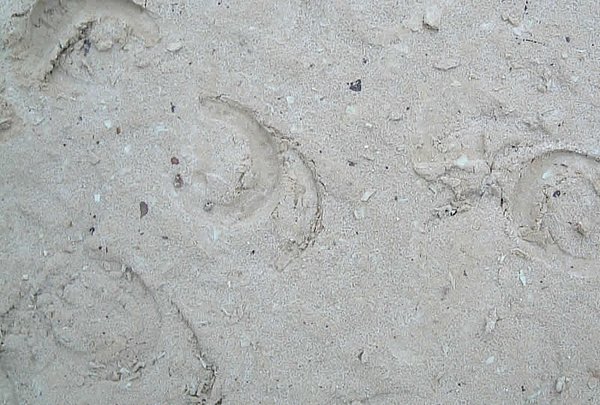Riding Arena Construction
Consultancy
The construction of all-weather riding arenas with surfaces optimised for equestrian sports requires experience and expertise. A working group within the German Research Society for Landscape Development and Landscaping (Forschungsgesellschaft Landschaftsentwicklung Landschaftsbau - FLL) is currently collaborating with the German Equestrian Association (Deutschen Reiterlichen Vereinigung FN) to develop a set of technical regulations and recommendations. In addition to a technically optimum arena construction, a good riding surface needs to 'work' in terms of the health of the horses using it. In many cases, horses (and riders) are forced to cope with surfaces that are either too deep, too slippery, too hard or too dusty.
Today and in future, state-of-the-art materials must be used in conjunction with the technical configuration of the riding arena, which are free of pollutants so that owners or leaseholders are not faced with high waste disposal costs when the time comes to decontaminate and restore the facility.
The Construction Sequence
The first step in the construction sequence is to remove the topsoil and to create a level area with a gradient of 1 - 1.5%. This is followed by the installation of drainage and irrigation systems designed for the local drainage characteristics and requirements. The bearing layer consists of quality controlled materials such as frost resistant gravel, mineral aggregates, pumice stone etc., installed, with the aid of a laser level, to an even depth of 15 - 25cm.
The separation layer is then constructed. Depending on the precise requirements and desired standard, this may consist either of a mineral substance, such as brick sand or pumice stone, or – for optimised vertical drainage – our special perforated drainage matting.
Due to its structural properties (web structure in combination with bearing feet), our perforated drainage matting also supports horizontal drainage directly below the matting layer. Another option is to construct the separation layer using plastic grid sheeting, which then needs to be filled with construction grit or crushed stone before the actual footing is incorporated and levelled with the aid laser systems. This method is often used in paddock construction.
Next, we install a peripheral edging structure made, for example, of bound and chamfered, durable larch timber planking, expertly secured to the subsoil with construction pegs. This edging structure provides erosion protection for the footing layer whilst simultaneously delineating the riding arena from a visual perspective.
Finally, the footing is installed on top of the separation layer to the required depth of c. 8 - 10cm, again with the aid of a laser level.
For everyday training and equestrian sport in indoor arenas, we recommend a footing layer of low-dust, edge-rounded quartz sand, such as Kirchhellen fine quartz sand, and for outdoor sand arenas, we recommend footings of washed quartz sand, natural sand or hydraulically treated equestrian sport sand, such as our own Premium Nordstrand footing. The footing layer can be optimised through the incorporation of durable, certified additives made of non-woven chaff and/or an aggregate of synthetic non-woven chaff and polyester fibres. A novel alternative is to combine it with organic, yet durable, natural chaff.
Creative Solutions for Your Riding Arena
Ebb and flow riding arenas are systems that incorporate fully automated irrigation and drainage technology. A highly-quality quartz sand layer, roughly 30cm deep, is built up over a drainage pipe system and hydrated. This gives the footing its stability and cohesion. Whenever the moisture content in the footings drops (due to evaporation), the hydration level pre-configured in the control system is automatically restored.
Our Active-Aqua irrigation system is a new development, designed for equestrian arena surfaces, especially indoor riding hall surfaces. These systems use a combination of floor grids and drip tubing to provide subsurface irrigation in riding arenas, resulting in an even irrigation of the entire footing layer. Please contact us for further details. Whether for the hobbyist or professional, our Partner Network gives us the ability to offer expert solutions for every aspect of arena construction, for all equestrian disciplines, anywhere in Germany and throughout Europe.
When it comes to individual product components, for indoor riding arenas, outdoor areas, lungeing circuits or paddocks, whether for new-build or renovation purposes, our highest priority is always the selection and combination of high-quality products.
As of now we are able, via our partner distribution network in the south of Germany, to offer you economic solutions for the construction, renovation and maintenance of riding arena surfaces throughout Bavaria, Baden-Württemberg, Austria and Switzerland.
We would be glad to provide you with information on our existing customers and reference sites whether in individual German states or other EU countries.
Working closely with you, the arena solutions we develop for everything from all-round or hobby usage, gymkhana or professional equestrian sports, will provide the basis for both an optimised horsemanship training regime and the health of your horses.
Our bespoke designs take various forms ranging from turn-key solutions comprising, for example, of combined footings and separation layers made of perforated matting, special grid sheeting for paddocks and riding areas, or dynamic mineral-based separation layers consisting of brick sand or pumice stone as well as footings of washed quartz sand with a well-defined, and finely graded filtration layers. Other options include footing aggregates of non-woven chaff mixed with a polyester fibre additive or various natural admixtures, such as IRS equestrian arena chips or natural fibre chaff (new).
We would also be glad to provide you with a range of additional products and services for all aspects of riding arenas, such as stable stalls and horse-walking circuits.



![[Translate to English:] Reitplatzbau](https://www.ehg-reitplatzbau.de/fileadmin/co_theme/Default/_processed_/9/d/csm_Reitplatzbau_ac33e6fecd.jpg)
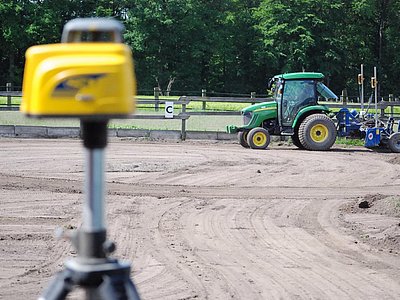
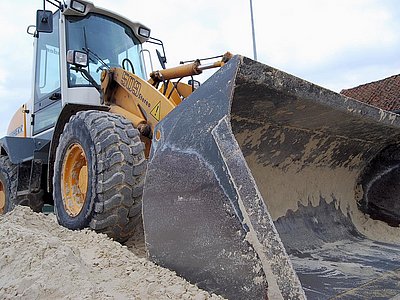
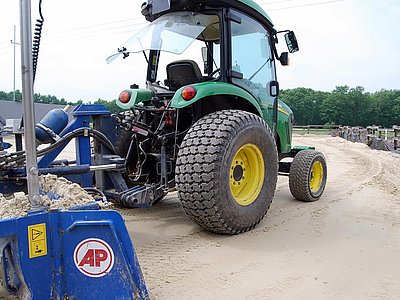
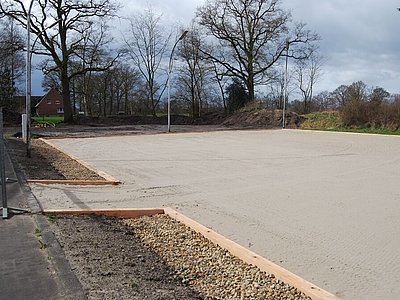
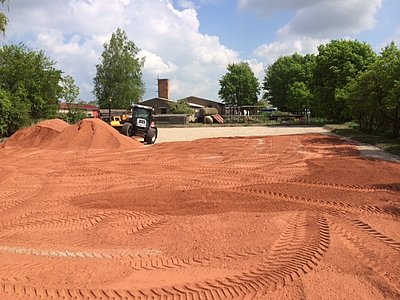
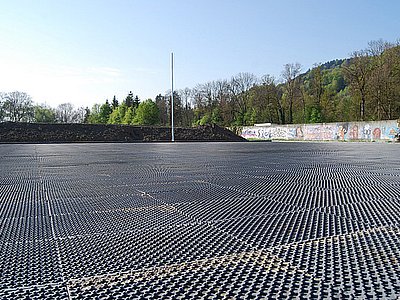
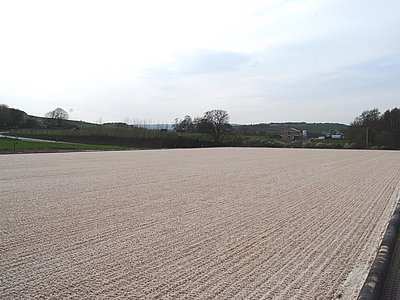
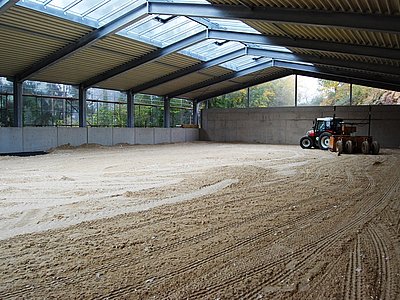
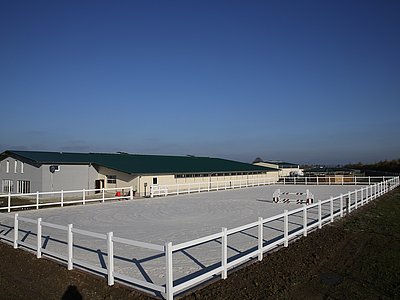
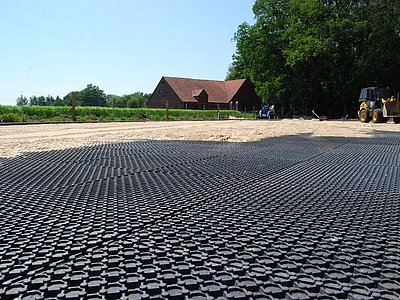
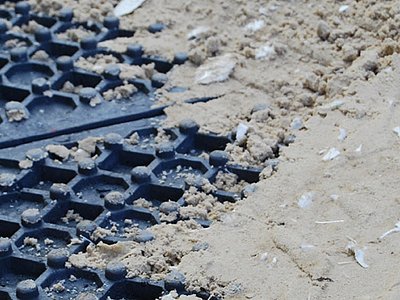
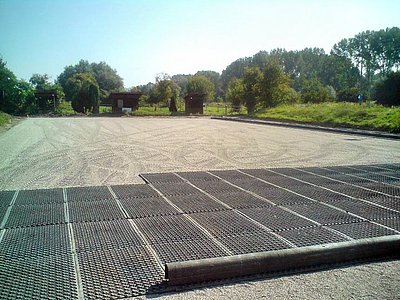
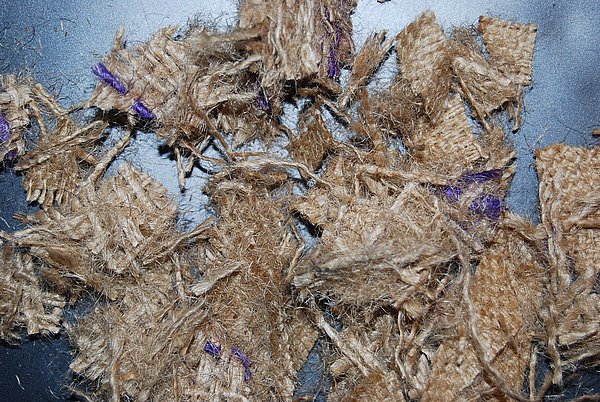
![[Translate to English:] [Translate to English:]](https://www.ehg-reitplatzbau.de/fileadmin/co_theme/Default/_processed_/f/b/csm_Sisalfaser_5a45332250.jpg)
